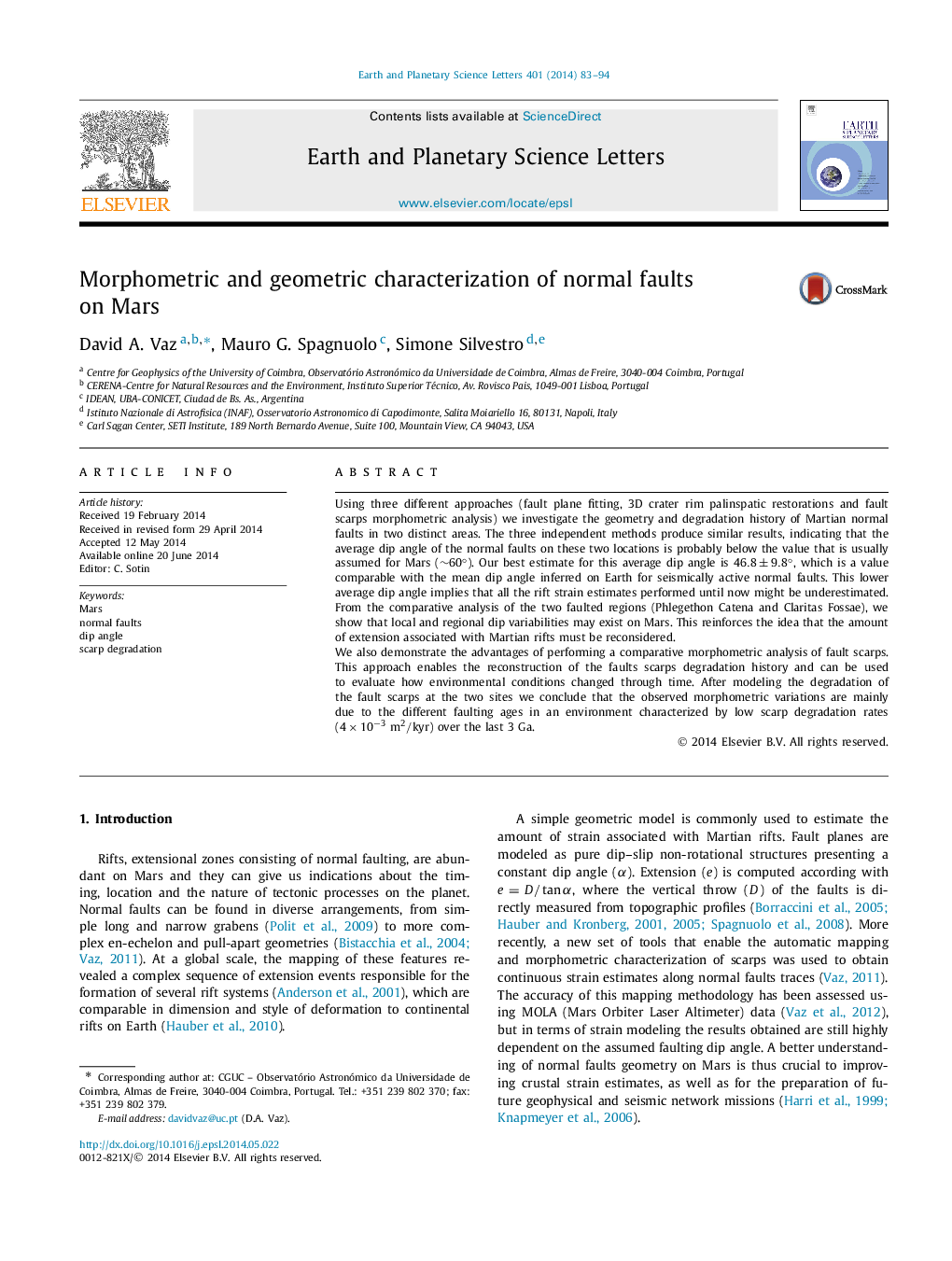| Article ID | Journal | Published Year | Pages | File Type |
|---|---|---|---|---|
| 6429182 | Earth and Planetary Science Letters | 2014 | 12 Pages |
â¢We investigate the geometry and morphometry of normal faults on Mars.â¢We show that the dip angle of normal faults on Mars is not constant.â¢Our results suggest that the average dip angle is lower than 60°.â¢In the last 3 Ga the rate of scarp degradation was very low.
Using three different approaches (fault plane fitting, 3D crater rim palinspatic restorations and fault scarps morphometric analysis) we investigate the geometry and degradation history of Martian normal faults in two distinct areas. The three independent methods produce similar results, indicating that the average dip angle of the normal faults on these two locations is probably below the value that is usually assumed for Mars (â¼60°). Our best estimate for this average dip angle is 46.8±9.8°, which is a value comparable with the mean dip angle inferred on Earth for seismically active normal faults. This lower average dip angle implies that all the rift strain estimates performed until now might be underestimated.From the comparative analysis of the two faulted regions (Phlegethon Catena and Claritas Fossae), we show that local and regional dip variabilities may exist on Mars. This reinforces the idea that the amount of extension associated with Martian rifts must be reconsidered.We also demonstrate the advantages of performing a comparative morphometric analysis of fault scarps. This approach enables the reconstruction of the faults scarps degradation history and can be used to evaluate how environmental conditions changed through time. After modeling the degradation of the fault scarps at the two sites we conclude that the observed morphometric variations are mainly due to the different faulting ages in an environment characterized by low scarp degradation rates (4Ã10â3 m2/kyr) over the last 3 Ga.
